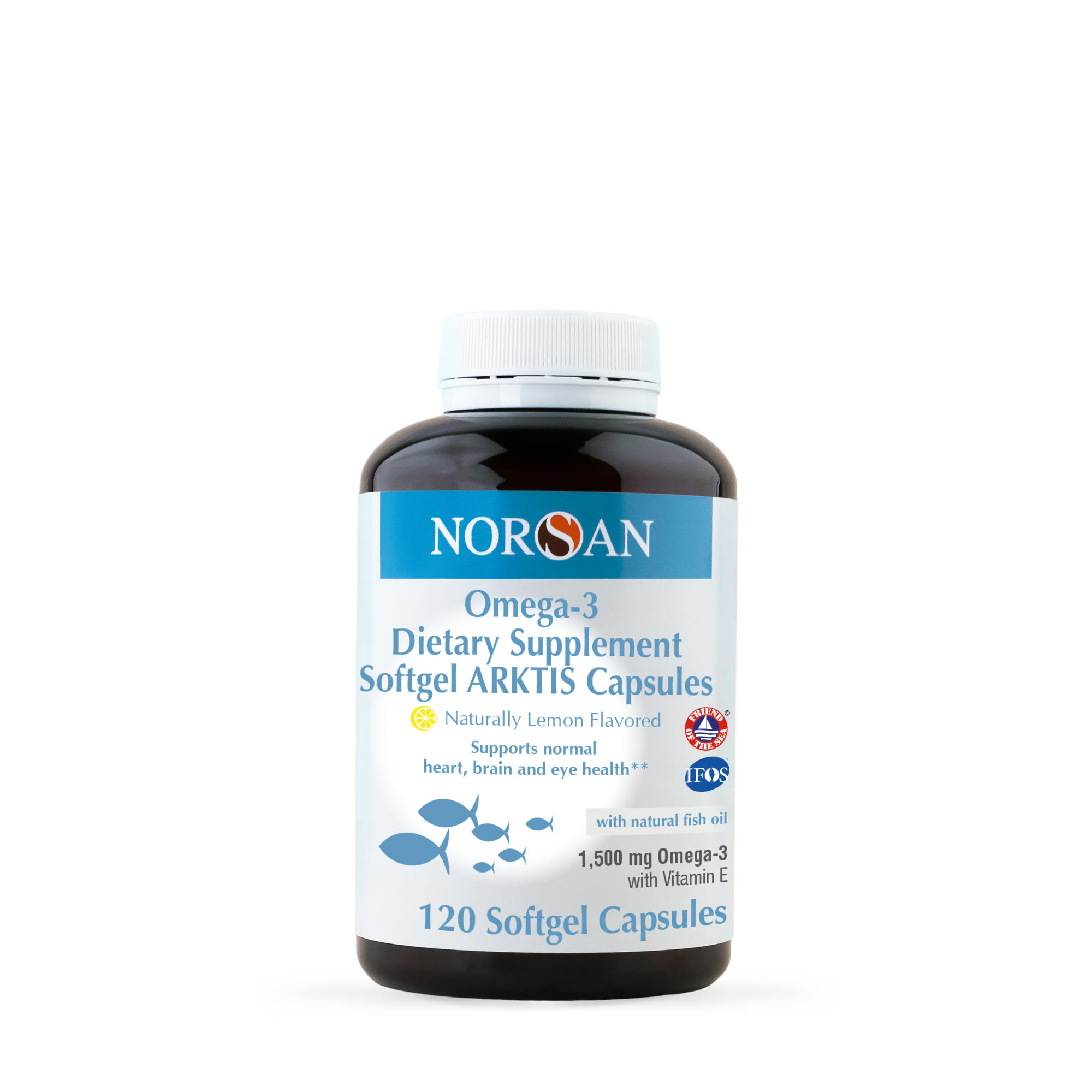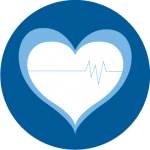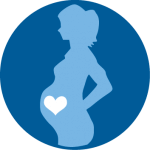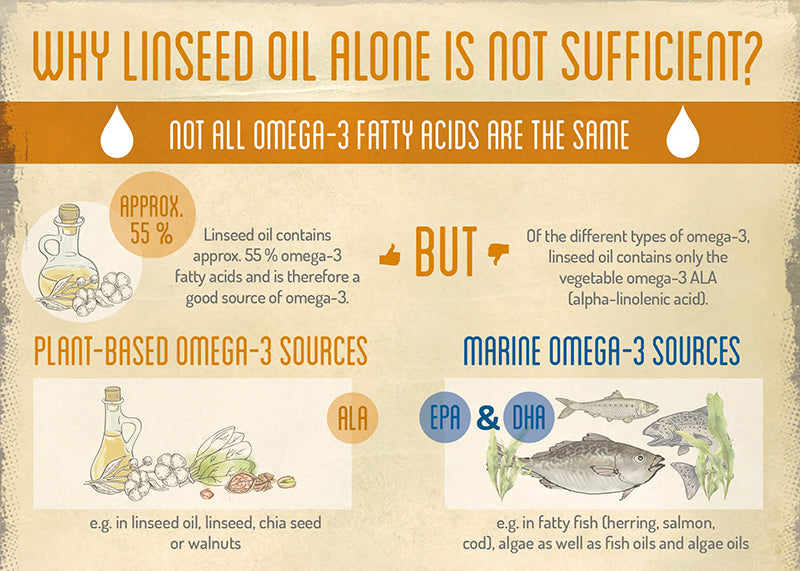

NORSAN Omega-3 Arktis Capsules
Good for the heart, vision and brain
- 100% natural cod liver oil from a wild and sustainable Arctic fishery
- 1,500 mg of omega-3 per daily dose (2 x 3 capsules)
- High DHA content
- No reflux
- Purified and free of pollutants, heavy metals and PCBs
- Rosemary extract as an antioxidant
- Perfect when travelling
Pairs well with
If you have any questions, you are always welcome to contact us. We'll get back to you as soon as possible, within 24 hours on weekdays.
-
Shipping Information
Use this text to answer questions in as much detail as possible for your customers.
-
Customer Support
Use this text to answer questions in as much detail as possible for your customers.
-
FAQ’s
Use this text to answer questions in as much detail as possible for your customers.
-
Contact Us
Use this text to answer questions in as much detail as possible for your customers.
-
Information
Share contact information, store details, and brand content with your customers.
1,500 mg of omega-3 per daily dose
Natural Rich in omega-3 fatty acids
Easy to use every day
No. 1 omega-3 brand
1,500 mg of omega-3 per daily dose
Omega-3 Arktis capsules contain pure natural cod liver oil from sustainable arctic fisheries. A daily dose (2×3 capsules) provides 1,500 mg of omega-3 fatty acids (EPA and DHA).
With it high dosage, Omega-3 Arktis capsules is a good alternative to the oil in fluid form. It is perfect for those not wanting to take pure liquid oil or for those who travel.
Cod liver oil from the arctic ocean
The nutrient-rich cold Arctic Ocean, where the cod grows up and lives, ensures a unique and high quality. The natural Omega-3 Arctic cod oil comes from wild catch. The catch area is located directly off the Norwegian coast. The caught fish is processed within few hours that ensures a high “freshness” of the oil.

Natural cod liver oil
Our natural cod oil from North-Norway consists of a fatty acid complex of over 50 fatty acids. This natural fatty acid structure of the fish is preserved during the extraction and purification process. The consumption of the non-concentrated natural Omega-3 oil has a similar positive effect as fish consumption.
Pure and clean
In a modern facility the oil is effectively cleaned for pollutants, PCBs and heavy metals. Through the cleaning process the fatty acid structure is protected so that the finished oil stands out with a high freshness. This freshness translates into a pleasant taste and an oil that is well tolerated. The total oxidation value (totox) of the oil range between 3 and 5. The low value is a confirmation of the quality of the raw materials and the refining process. If you want to convince yourself of the freshness and good quality, smell and taste the oil. Smell and taste are good indicators of the quality of omega-3 oils – as with any other food.
Positive effects of the Omega-3 fatty acids EPA and DHA
The European Food Safety Authority (EFSA) confirms favourable health benefits from the marine omega-3 fatty acids EPA and DHA:
Heart function

The heart is the central organ of the human body. Blood flow and cell metabolism are key factors in heart health. An adequate intake of omega-3 fatty acids has been shown to positively influence these factors. EPA and DHA contribute to normal heart function. According to EFSA, the beneficial effects are felt with a daily intake of at least 250 mg of EPA and DHA.
Eye and vision

The cells of the human eye contain a particularly high proportion of omega-3 fatty acids. Numerous studies have shown that supplementation with omega-3 fatty acids has a positive effect on vision. DHA helps maintain normal vision. According to EFSA, the beneficial effects are felt with a daily intake of at least 250 mg of DHA.
Brain and cognitive function

The brain is composed largely of unsaturated fatty acids. Recent studies show a positive correlation between the intake of omega-3 fatty acids and improved brain function. DHA helps maintain normal brain function. According to EFSA, the beneficial effects are felt with a daily intake of at least 250 mg of DHA.
Pregnancy

Maternal consumption of DHA contributes to the normal eye and brain development of the fetus and breastfed infant. According to EFSA, the beneficial effects are felt with at least 200 mg in addition to the recommended daily dose for an adult (i.e. at least 250 mg of DHA and EPA).
Infants

Infant consumption of DHA in follow-on formulas contributes to normal vision development up to 12 months of age. According to EFSA, the effect is beneficial as early as 100 mg of DHA daily intake.
Why linseed oil alone is not enough
EPA and DHA are found in marine sources like fish, algae, and krill. Most omega-3 vegetable oils, such as linseed oil and chia oils, only contain the vegetable omega-3 fatty acid ALA (alpha linolenic acid) and not EPA and DHA.

Among vegetable oils, linseed oil, for example, contains particularly high levels of ALA. Nuts and chia seeds also contain ALA. It is important to know that ALA can only be converted to the important marine omega-3 fatty acids EPA and DHA to a limited extent. The conversion factor is only 0.5-10% and is highly dependent on weight, metabolism and other factors. Scientific studies are broadly aligned in the conclusion that intake of ALA alone cannot regulate an deficit in EPA and DHA.
Should I take omega-3 capsules or oil?
At NORSAN, we are convinced that nature has planned everything about the composition of nutrients and foods, and that natural and unmodified foods are therefore better assimilated by the body. That is why NORSAN fish oil is a natural oil and we do not chemically process it to concentrate it.

The choice between Omega-3 Capsules and the liquid version of fish oil is a matter of taste. On the one hand, the capsules are easier to carry when traveling and are more suitable for people who do not like to consume pure oil. On the other hand, liquid fish oil is more convenient to integrate into everyday life because it can simply be added to food like normal oil and it tastes so good that it can also be consumed pure without any problems. Another aspect is the price difference – the capsules are more expensive in the manufacturing process due to the extra work step required, the production of the capsules, which has an effect on the final price. Thus, the alternative product to liquid oil is more expensive than oil in its original form.
We recommend that you choose according to your personal tastes and feelings. Both products are an optimal source of omega-3 fatty acids and are made from natural wild fish oil from sustainable fishing. If you are still hesitating or if you would like more information about our products, you can contact us by phone (030 555 788 990) or send us an e-mail (post@norsan-omega.com). We will be happy to provide you with information and advice.
Nutritional Values & Information
Ingredients
Natural cod liver oil (70.8%); gelatine; humectant: glycerin; antioxidant: rosemary extract; vitamin E (mixed tocopherols).
Recommended daily dose
2 x 3 capsules per day during or after a meal. A daily dose contains 1,500 mg of omega-3 fatty acids, of which 480 mg is EPA and 720 mg is DHA.
Storage
Unopened products should be stored away from direct sunlight and at a stable room or cellar temperature. Keep out of reach of small children. Do not exceed the recommended daily dose. Food supplements are not a substitute for a varied and balanced diet or a healthy lifestyle.
No unpleasant reflux after ingestion
It is the high quality of the raw materials and the origin of the cod that avoids unpleasant refluxes and returns after the ingestion of Omega-3 Arktis Capsules. The Arctic Ocean is particularly rich in nutrients and is not very polluted. In addition, between the catching of the fish and their processing, a maximum of only 4 hours elapses. It is for these reasons that NORSAN cod liver oil has a low ToTox (oxidation index) and does not cause any unpleasant reflux after ingestion.
FAQs
Please read our FAQs page to find out more.
Are there heavy metals in Omega-3 Total fish oil?
As the oceans become increasingly polluted, this also affects the fish in the world’s oceans. The further down the food chain the fish are, the higher the levels of PCBs and heavy metals. For example, sardines have lower levels than cod.
The NORSAN fish oil, which we use for our Omega-3 Total, is carefully purified from PCBs and heavy metals in Norway. Thus, the oil also shows best values in this respect: Less than one fifth of the EU maximum limit and comparatively only 2% of the amounts contained in a serving (100g) of cod. If one tablespoon of total omega-3 oil is consumed daily, this represents only about 10% of the average daily intake of PCBs from other foods.
Can you overdose the oil and if so, what happens then?
An overdose is possible, but very difficult to realize. Theoretically, this would require taking about more than a third of the bottle a day. The consequences of an overdose would be:
Occurrence of bruises and dilution of the blood.
From which fish is the Omega-3 Total fish oil obtained?
Decisive for the quality of the fish oil is the right selection of the raw material – i.e. the fish. Mainly small deep-sea fish from wild catches such as sardines, mackerel and anchovies are caught and immediately processed and cooled on board. The fish come exclusively from the Atlantic. The NORSAN fish oil is not extracted as a by-product from the fish liver, but directly from the fish flesh. Often there are only 4 hours between the catch and the transfer to the production.
How high must the therapeutic dosage be to achieve a positive effect?
The therapeutic dosage is over 2,000 mg of omega-3 fatty acids per day. This corresponds to one tablespoon of Omega-3 Total Oil. This dosage recommendation is based on the empirical values of over 3,000 fatty acid analyses and is therefore considered to be empirically tested.
Therefore, for the preventive care of your body, a permanent intake of also one tablespoon of Omega-3 Total per day applies.
Is the product gluten-free?
Yes, all our products are gluten-free.







